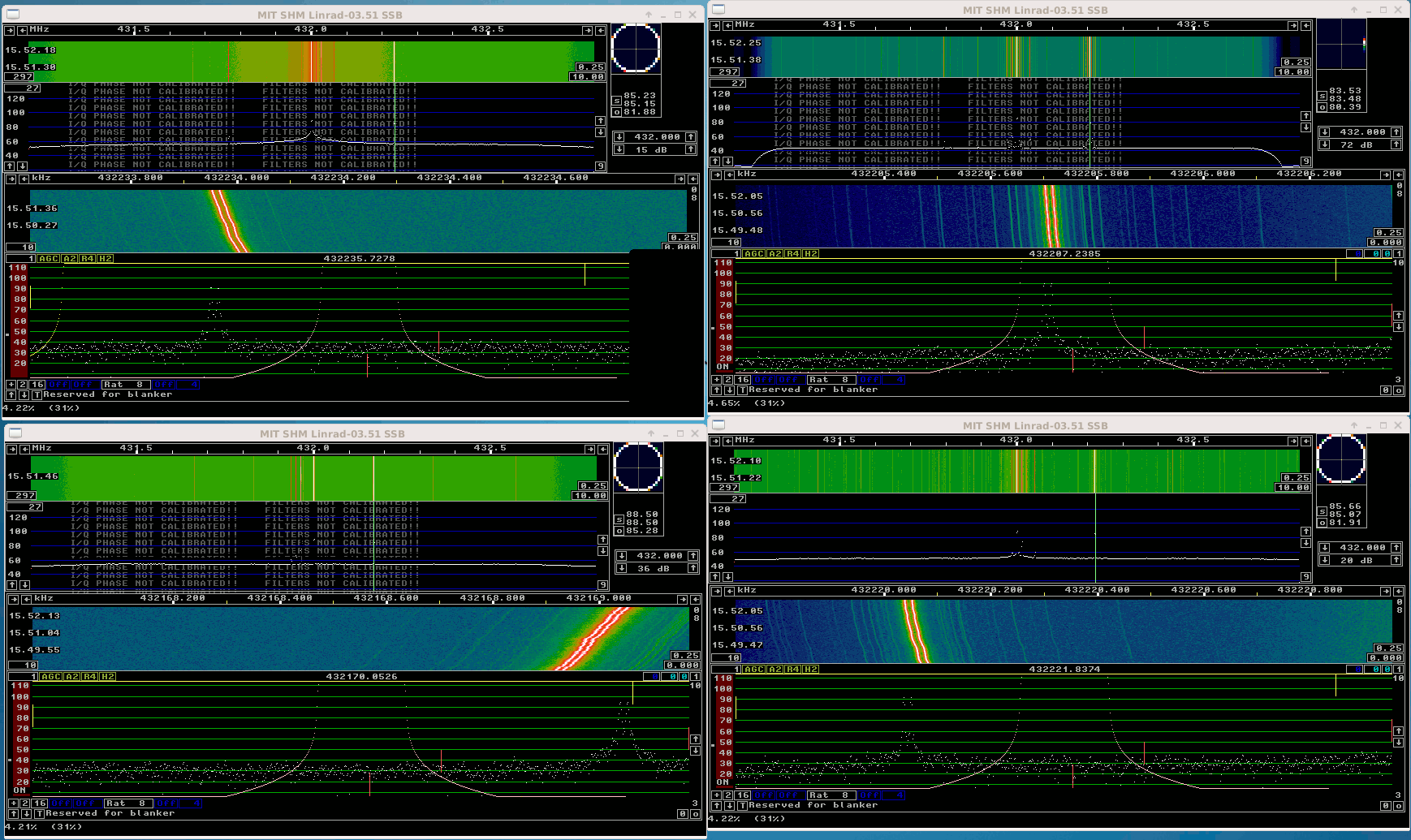|
Figure 1 is a photo of the four dongles that have been compared in this experiment.
Figure 2 is a screen dump with all the dongles running.
All dongles sample at 1.6 MHz and all processing parameters
are identical between the dongles.
Figure 3 is a screen dump when the room temperature has been
disturbed by an opened window.
(Note that the frequency scale is contracted compared to figure 2.)
In figures 2 and 3 the same signal is routed to the four
domgles through a 7 port resistive splitter to which
a HP8970A and a HP8970B is connected.
The two signal generators are locked to independent 10 MHz
frequency standards.
Even in the best dongle the frequency drift of the
two signals is perfectly correlated which means that
the noise modulation visible for the Logitec dongle
is entirely due to the dongle and not due to
the signal generators.
The dongles are arranged the same way in all three images.
-
UPPER LEFT
Lifeview LV5TDeluxe
Manufacturer: Realtek
Product id: RTL2838UHIDIR
Tuner: E4000 (Elonics)
Interface: RTL2832 (Realtek)
-
UPPER RIGHT
LDT-1S310U/J
Manufacturer: Logitec
Product id: none
Tuner: MSi001 (Mirics)
Interface: MSi2500 (Mirics)
LOWER LEFT
ezcap USB 2.0 DVB-T/DAB/FM dongle
Manufacturer: Realtek
Product id: RTL2838UHIDIR
Tuner: R820T (Rafael)
Interface: RTL2832 (Realtek)
-
LOWER RIGHT
Terratec NOXON DAB/DAB+ USB dongle (rev 1)
Manufacturer: NOXON
Product id: DAB Stick
Tuner: FC0013 (Fitipower)
Interface: RTL2832 (Realtek)
It is obvious that the frequency stability differs significantly
between the dongles.
|


